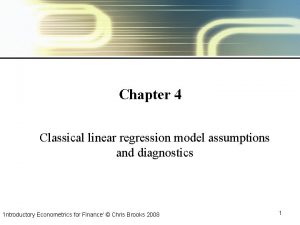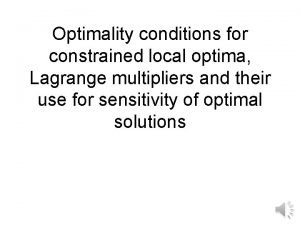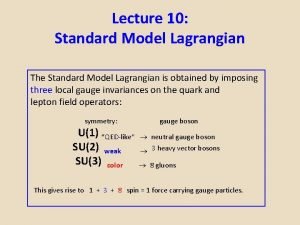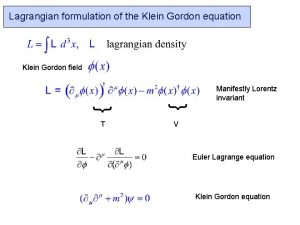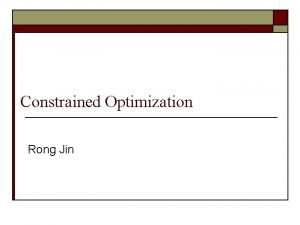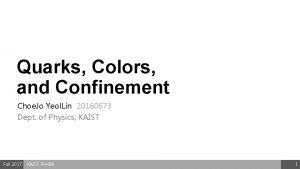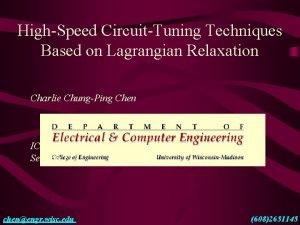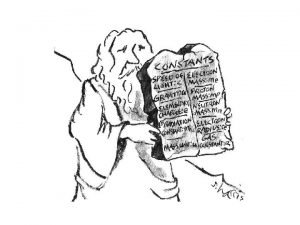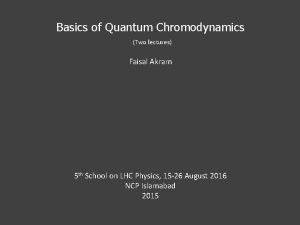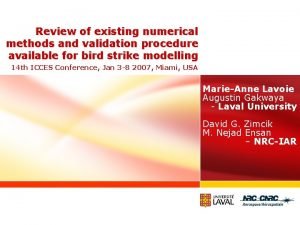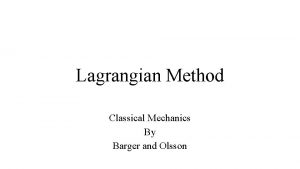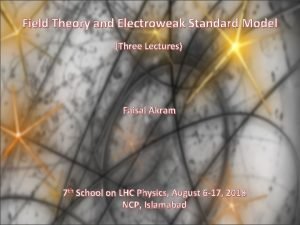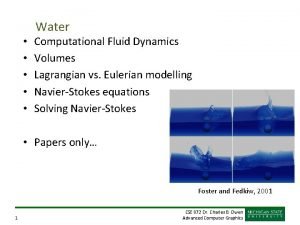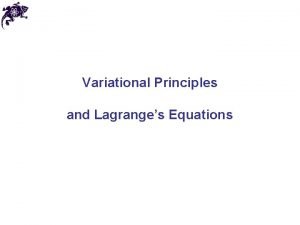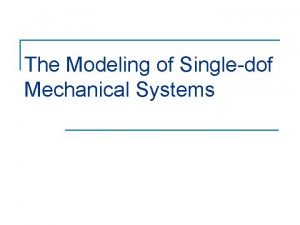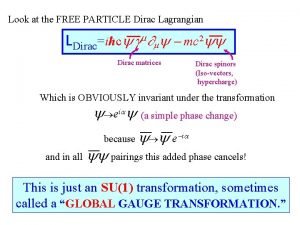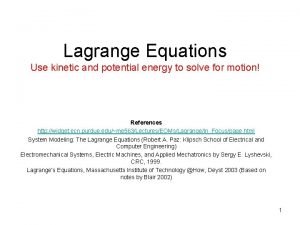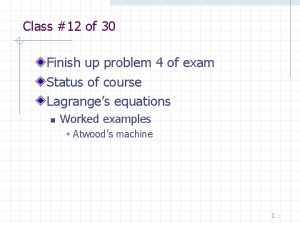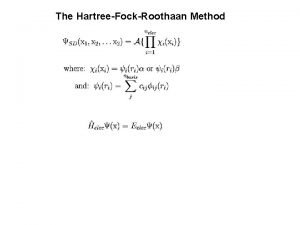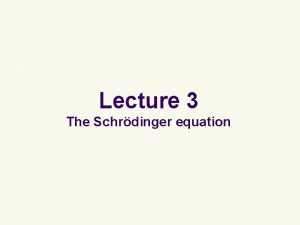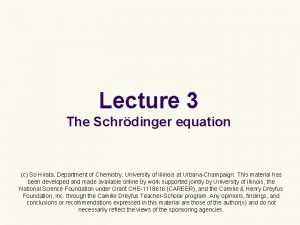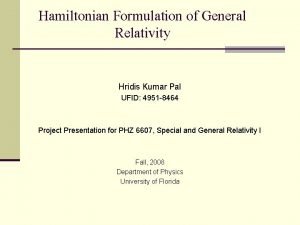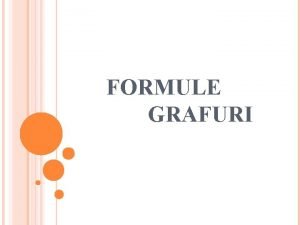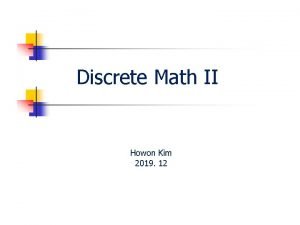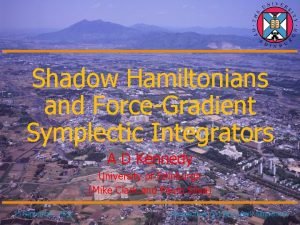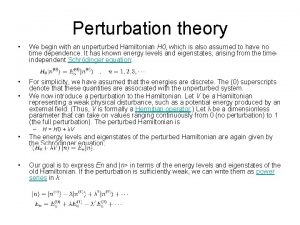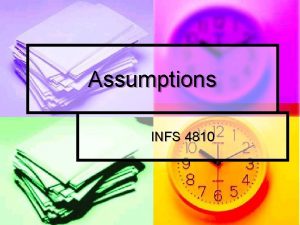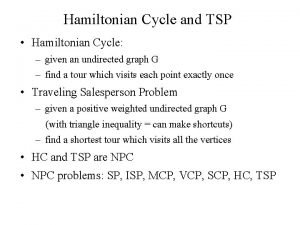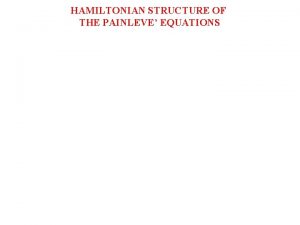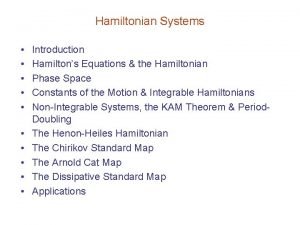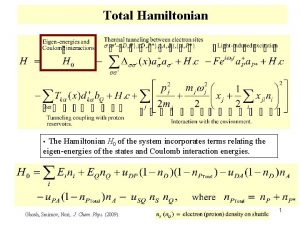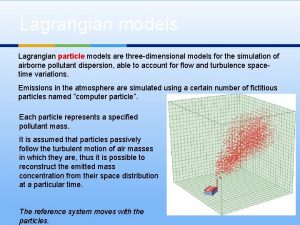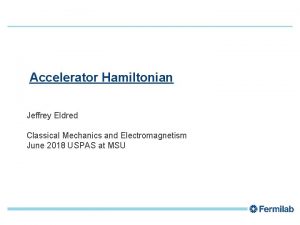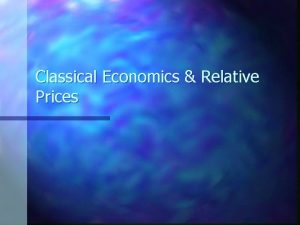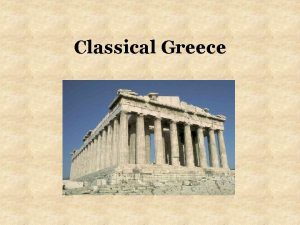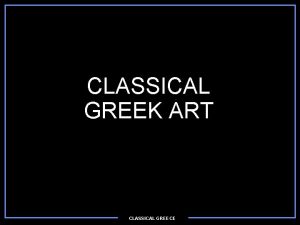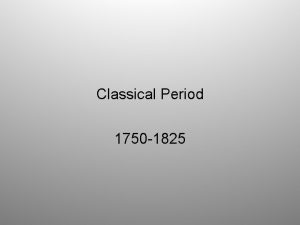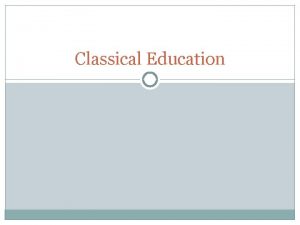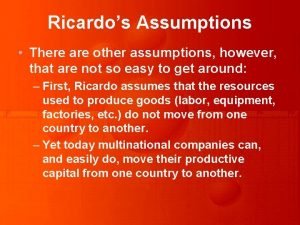From physical assumptions to classical Hamiltonian and Lagrangian
































- Slides: 32

From physical assumptions to classical Hamiltonian and Lagrangian particle mechanics Gabriele Carcassi, Christine A. Aidala, David John Baker and Lydia Bieri University of Michigan Foundations of Physics 2016 G. Carcassi - University of Michigan 1

Introduction • G. Carcassi - University of Michigan 2

Introduction • To answer the question, we need a way to physically motivate Hamiltonian (and Lagrangian) mechanics • Start from physical assumptions that characterize the system under study – Hopefully ideas that are already familiar • Show that those assumptions lead necessarily to the known mathematical frameworks – in the most direct way possible – not to some new theory • Gain new insights – provide a math-physics dictionary • The objective of this talk is to show that such a program is indeed possible and worthwhile G. Carcassi - University of Michigan 3

Introduction • We limit ourselves here to classical Hamiltonian/Lagrangian particle mechanics – no relativity, quantum or field theory • Go through highlights of the derivation and give physical intuition for them – Elements from different fields are used: vector spaces, topology, measure theory, differential/ symplectic/Riemannian geometry • Let’s start with an overview of the assumptions and what they lead to – The rest of the talk is more details and insight to see how it all works G. Carcassi - University of Michigan 4

Overview Only 3 assumptions: • Determinism and reversibility (given the initial state we can identify the final state and vice versa) – Dynamical system – State space is a topological space, evolution map is a selfhomeomorphism • Infinitesimal reducibility (describing the state of the whole is equivalent to describing the state of its infinitesimal parts) – Hamiltonian mechanics for infinitesimal parts – State of the whole is a distribution over the state space for the infinitesimal parts (i. e. phase space) • Kinematic equivalence (studying the motion of the infinitesimal parts is equivalent to studying the state evolution) – Lagrangian mechanics for infinitesimal parts – Dynamics is the one for massive particles under scalar/vector potential forces G. Carcassi - University of Michigan 5

Assumption I: Determinism and reversibility The system undergoes deterministic and reversible time evolution: given the initial state, we can identify the final state; given the final state, we can reconstruct the initial state G. Carcassi - University of Michigan 6

Physical distinguishability and topological spaces • States are physical configurations of the system at a given time • => states must be physically distinguishable – There must exist an external process (i. e. that involves the environment) that is potentially able to tell two states apart • How do we mathematically capture physical distinguishability? G. Carcassi - University of Michigan 7

Physical distinguishability and topological spaces System under study (identically prepared n times) Set of states External process Set of states compatible with the given outcome Set of outcomes The collection of all sets of states compatible with all potential outcomes of all potential processes form a Hausdorff and second countable topology G. Carcassi - University of Michigan 8

Physical distinguishability and topological spaces • Use of sets and set operations is apparent in exclusion plots Range of Higgs masses excluded by different experiments G. Carcassi - University of Michigan Range of WIMP (dark matter) mass/cross section excluded by different experiments 9

Mapping physical objects and continuous functions • topological G. Carcassi - University of Michigan sense 10

Mapping physical objects and continuous functions discon tinuity Finite precision knowledge of one continuous quantity corresponds to finite precision knowledge of the other G. Carcassi - University of Michigan Finite precision knowledge of one continuous quantity does not always correspond to finite precision knowledge of the other 11

Deterministic and reversible maps and homeomorphisms • Physical distinguishability -> topological space • Map between physically distinguishable objects -> continuous map • Deterministic and reversible evolution is a bijective map • A bijective continuous map is a homeomorphism: deterministic and reversible evolution is a selfhomeomorphism – A map onto the same space that preserves what is physically distinguishable (i. e. the topology) G. Carcassi - University of Michigan 12

Not all self-homeomorphisms are deterministic and reversible maps Discrete topology Standard (continuous) topology ? ? A self-homeomorphism that maps a set to a proper superset or subset is clearly not a deterministic or reversible process! Need to keep track of the cardinality of states and possibilities. We need a measure. sense G. Carcassi - University of Michigan theory e r u s a e m 13

From assumption I • Physical distinguishability -> topological space • Map between physically distinguishable objects -> continuous map • Deterministic and reversible evolution -> selfhomeomorphism – Not all self-homeomorphisms -> need a measure to count states G. Carcassi - University of Michigan 14

Assumption II: infinitesimal reducibility (classical material) The system is composed of a homogeneous infinitesimally reducible material. Each part undergoes deterministic and reversible evolution. G. Carcassi - University of Michigan 15

Classical homogeneous material and real vector spaces • A “classical material” is: – Decomposable: can be divided into smaller amounts – Infinitesimally so: can keep dividing arbitrarily (“particles” are the limits of such division) – Reducible: giving state of whole equivalent to giving state of parts – Homogeneous: state space of each part is the same • A classical fluid is an example • How do we mathematically capture the structure of such material? G. Carcassi - University of Michigan 16

Classical homogeneous material and real vector spaces + = = Infinitesimally decomposable => increase/decrease the amount of material by a real number These two operations give the structure of a vector space G. Carcassi - University of Michigan 17

Classical homogeneous material and function spaces • G. Carcassi - University of Michigan 18

Integration and measure • G. Carcassi - University of Michigan 19

Integration and measure Because we have densities and integration we can assign a measure (a “size”) to each set of states Infinit e amo unt: in finite s et Take a set of particle states. Fill it with a uniform density. Look at the total amount of material. Zero amount: zero measure set G. Carcassi - University of Michigan nite set i f : t n of U: u t o n m u a o e m t i ea Fin V doubl uble the size V is do Analogous to using water to measure the capacity of a container 20

Invariant densities and differentiability • G. Carcassi - University of Michigan 21

Invariant densities and symplectic manifolds • G. Carcassi - University of Michigan 22

Invariant densities and symplectic manifolds Wedge product (area) within a d. o. f. Scalar product across independent d. o. f. G. Carcassi - University of Michigan n of 2 D renditio 4 D space 23

Deterministic and reversible maps and symplectomorphisms • G. Carcassi - University of Michigan 24

Deterministic and reversible maps and symplectomorphisms Possibilities (area) within a d. o. f. conserved Independent d. o. f. remain independent (orthogonal) Total number of states (volume) is conserved All that Hamiltonian mechanics does is to conserve the number of states and possibilities It’s the continuous equivalent of “ 3 possibilities for x times 2 possibilities for y gives 6 total states” G. Carcassi - University of Michigan 25

From assumption II • G. Carcassi - University of Michigan 26

Assumption III: kinematic equivalence Studying the motion (kinematics) of the system is equivalent to studying its state evolution (dynamics) G. Carcassi - University of Michigan 27

Kinematic equivalence and Lagrangian systems • G. Carcassi - University of Michigan 28

Kinematic equivalence, inertial mass and conservative forces • G. Carcassi - University of Michigan 29

Kinematic equivalence, inertial mass and conservative forces What is inertial mass? It’s the constant that tells us how many possibilities (i. e. possible states) there are for a unit range of velocity. More massive object = more states Why is a more massive body more difficult to accelerate? Because for the same change in velocity it has to go through more states. What are conservative forces? The ones that conserve the number of states (deterministic and reversible forces). G. Carcassi - University of Michigan 30

From assumption III • Can convert between state variables and initial conditions -> Convex Hamiltonian; existence of Lagrangian • Invariant densities on initial conditions -> linear relationship between conjugate momentum and velocity; inertial mass; scalar/vector potential forces G. Carcassi - University of Michigan 31

Conclusion • Physically motivating Hamiltonian and Lagrangian mechanics is possible and offers insights • Classical Hamiltonian and Lagrangian mechanics founded upon three physical assumptions, which give the definition of states and their laws of evolution – Only distributions give meaningful account for use of cotangent bundle/Hamilton’s equations – Kinematic equivalence gives potential forces, tells why second order equations of motion, what is inertial mass • Extending this approach to other fundamental theories may give insights useful to address open problems G. Carcassi - University of Michigan 32
 Assumptions of the classical linear regression model
Assumptions of the classical linear regression model Lagrange multiplier
Lagrange multiplier Lagrangian standard model
Lagrangian standard model Klein gordon lagrangian
Klein gordon lagrangian Standard model lagrangian
Standard model lagrangian Lagrangian optimization
Lagrangian optimization Eulerian vs lagrangian
Eulerian vs lagrangian Lagrangian
Lagrangian Lagrangian relaxation tutorial
Lagrangian relaxation tutorial Cyclic coordinates
Cyclic coordinates Stranglet
Stranglet Quantum chromodynamics for dummies
Quantum chromodynamics for dummies Lagrangian
Lagrangian Lagrangian
Lagrangian Standard model lagrangian
Standard model lagrangian Incompressiblity
Incompressiblity Euler lagrange
Euler lagrange Lagrangian formula
Lagrangian formula Qcd lagrangian
Qcd lagrangian Dirac lagrangian
Dirac lagrangian Lagrange
Lagrange Atwood machine lagrangian
Atwood machine lagrangian Variational principle
Variational principle Schrodinger time dependent equation
Schrodinger time dependent equation So hirata
So hirata Javier junquera
Javier junquera Hridis pal
Hridis pal Hamilton jacobi equation
Hamilton jacobi equation Subgrafuri
Subgrafuri Chromatic number
Chromatic number Hamilton's equations of motion
Hamilton's equations of motion Shadow hamiltonian
Shadow hamiltonian Unperturbed hamiltonian
Unperturbed hamiltonian
